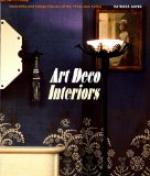Many of our museums have interesting collections of old Wedgwood. Altogether the most complete collection we have ever seen is in the museum adjoining the Wedgwood factories in Staffordshire, England. The curator there, an old man of about seventy, loves to tell the story of its founding and growth. He began as a labourer in the potteries and has worked his way up to be guardian of the veterans in perfected types. Many of the rare and beautiful specimens he has himself dug up in the grounds, where from time to time, since 1750, they were thrown out as broken, useless debris. The recovery of these bits, their preservation and classification, together with valuable donations made by English families who have inherited rare specimens, have not only placed at the disposal of those interested, the fascinating history of Wedgwood, in a thrilling object lesson, but has made the modern Wedgwood what it is:—one of the most beautiful varieties of tableware in the market to-day.
Josiah Wedgwood is said to have been the first English potter, counting from the Roman time to the first quarter of the eighteenth century, who made vases to be used for mere decoration. Chelsea, Worcester and Derby were just then beginning to make fine porcelain. In Wedgwood’s day it was the rule for young men of title and wealth to go abroad, and the souvenirs which they brought back with them, such as pictures and vases, helped to form a taste for the antique, in England. Then, too, books on Greek art were being written by English travellers. Josiah Wedgwood had a natural bent for the pure line and classic subjects, but he was, also, possessed with the keen businessman’s intuition as to what his particular market demanded. So he sat about copying the line and decorations of the antique Greek vases. He reproduced lines and designs in decoration, but invented the “bodies,” that is to say, the materials from which the potters moulded his wares. He is said to have invented in all, twenty varieties. We say that he reproduced Greek designs, and so he did, but John Flaxman, his chief decorator, who lived in Rome, where he had a studio and clever assistants, studied the classics, imbibed their spirit and originated the large majority of Wedgwood’s so-called “Greek” designs, —those exquisite cameo-like compositions in white, on backgrounds of pastel colours, which appeared as miniatures mounted for jewellery, medallions let into wall panels, and on furniture and Carrara marble mantelpieces, wonderful works of art wrought of his “Jasper” paste, which make Josiah Wedgwood outrank any producer of ceramics who has ever lived in any age.
Wedgwood’s first vases were for use, although they were ornamental, too. Those were the pots he made in which to grow bulbs or roots, and the “bough pots” which were filled with cut flowers and used to ornament the hearth in summer.
Mr. Frederick Rathbone, compiler of the Wedgwood catalogue in 1909, a memorial to Josiah Wedgwood made possible by his great-granddaughter, says that during his thirty-five years’ study of Wedgwood’s work, he had yet to learn of a single vase which was ever made by him, or sent out from his factory at Etruria, which was lacking in grace or beauty.




